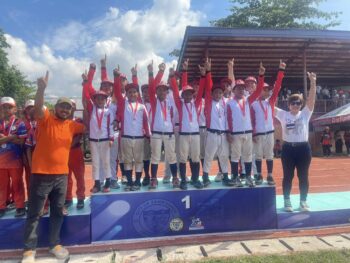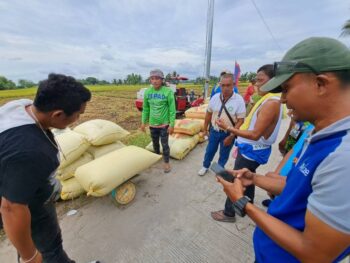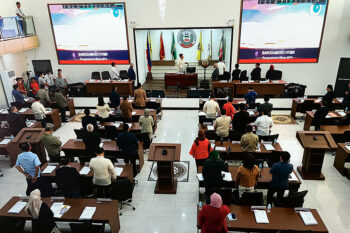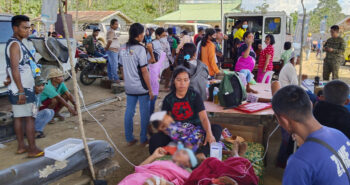
Part 6 of 7: Looking Forward To A Life Of Peace and Development
Rudy Buhay Rodil
(Editor’s note: This article is a slight revision of the lectures the author delivered between the years 1999 and 2000 to two major audiences — the Center for Media Freedom and Responsibility in Metro Manila and the Bishops-Ulama Forum, now known as Bishops-Ulama Conference, in Davao City.)
With the triumph of People Power at EDSA, the world looked brighter for the whole country as well as for the Lumad communities. Through the joint effort of various indigenous peoples’ organizations, among them Lumad Mindanaw and some committed members of the Constitutional Commission, the 1987 Charter incorporated vital provisions directly addressed to the Bangsamoro and tribal communities all over the country.
Two significant sections may be cited here as examples of legal provisions that are considerably closer to that sought by the Lumads representing a radical departure from similar provisions in the Constitution of l973. Article XII, Section 5 of the 1987 Constitution states:
“The State, subject to the provisions of this Constitution and national development policies and programs, shall protect the rights of indigenous cultural communities to their ancestral lands to ensure their economic, social and cultural well-being.
“The Congress may provide for the applicability of customary laws governing property rights or relations in determining the ownership and extent of ancestral domain.”
The other provision is Article XIV (Education, Science and Technology, Arts, Culture and Sports), Section l7, as follows:
“The State shall recognize, respect, and protect the rights of indigenous cultural communities to preserve and develop their cultures, traditions, and institutions. It shall consider these rights in the formulation of national plans and policies.”
These passages would later become the constitutional basis of the Indigenous Peoples Rights Act.
The Indigenous Peoples Rights Act A Good Reason To Rejoice
Nurtured through the legislative process by committed and well informed indigenous leaders-lobbyists and sympathetic legislators, the Indigenous Peoples Rights Act (IPRA) deserves to be hailed as a strategic first in the history of Philippine legislation. This is the long awaited ancestral domain law that is designed to protect the interests of the indigenous peoples and uphold their identity and dignity.
A few examples will reveal the revolutionary features of this law. Native title is now part of the laws of the land (Chapter II, Sec. 3 (l).
Ancestral lands and ancestral domains now include not only the physical environment but also the spiritual and cultural bond to said territories (Chapter III, Sec 4).
Unlike before when the communal and private property aspects of ancestral domains had no legal value, now the law affirms that ancestral domains are the indigenous peoples’ private but communal property (Chapter III, Sec. 5).
Previously when the government may only issue certificates of ancestral domain claim and reserves the right to take it back, now ancestral lands or domains may be titled (Chapter III, Sec. 11).
Earlier during the martial law regime, lands with a slope of 18 percent were decreed as inalienable and non-disposable. Now, they are classified as alienable and disposable agricultural lands (Chapter III, Sec. 12, par. 2).
The Lumad communities have long demanded that they be able to exercise their right to self-determination within their ancestral domain. Now, the right to self-governance in accordance with customary laws is guaranteed. Lumad communities living in contiguous areas where they constitute the majority population may form a separate tribal barangay. The same guarantee is given to the exercise of their own judicial system (Chapter IV, Sec. 13, 15, 18).
Earlier, there was grave concern over Muslim communities which would not be included in the Autonomous Region in Muslim Mindanaw. This law encourages Muslims and ICCs/IPs not included in Muslim Mindanaw to establish autonomous communities (Chapter IV, Sec 14).
Considering the Lumad communities’ anxious response to the presence of big mining companies, this law acknowledges in black and white that the ICCs/IPs communities “shall have priority rights in the harvesting, extraction, development or exploitation of any natural resources within the ancestral domains.” Outsiders may be allowed to tap said natural resources only with a formal and written agreement with the concerned community, their consent having been arrived at in accordance with tribal decision-making processes (Chapter VIII, 57).
Anticipating the possible adverse reaction from settler and other corporate interests, the law expressly provides that in consideration for existing legitimate property claims, those acquired prior to the effectivity of this law, “shall be recognized and respected” (Chapter VIII, Sec 56). This is a pragmatic and timely reply to those settlers and other corporate interests that feel threatened by Lumad assertions of their own interests over their ancestral domain.
Guarded Moves from Mining Sector
Already, the effects of these and other strong features of the law are being felt in the mining sector. According to DENR Secretary Victor Ramos, some provisions of said law do not only affect the mining industry but many other important sectors such as energy, tourism and agriculture. A total of 85 out of the original 133 Financial and Technical Assistance Agreements (FTAA) applications registered in 1997 remain pending in the Mines and Geosciences Bureau (MGB); they must now be subject to rigorous screening because majority of them are found within the ancestral domains of indigenous communities. Also, there have been news of planned exodus among the giant mining investors due partly to the uncertainty following the passage of IPRA.
Need for Sympathetic Cooperation to Implement the IPRA
But like any good law designed to protect and uphold the rights of cultural communities, numerical minorities that they are, and vulnerable to manipulation due to their unfamiliarity with the letter of the law and its operations, the success of IPRA’s implementation will definitely require sympathetic cooperation from the rest of the government bureaucracy, as well as from the general population itself. There have been recent instances of settler opposition to Lumad applications for ancestral domain claim. The Commission on National Integration (CNI) of the past had, it should be recalled, very grand objectives but the government never released more than 50 percent of its budget allocation. Recently, too, there have some cases of settlers being the sources of very strong opposition to Lumad applications for ancestral domain claim because they felt that these might conflict with their own land claims.
The inertia of history and cultural bias are very much alive and must be viewed as a built-in obstacle to the fulfillment of the dreams provided for in this law. Decisive effort from all concerned must be exerted to generate a spirit of mutual acceptance and mutual cooperation among the various peoples of Mindanaw.
(MindaViews is the opinion section of MindaNews. A peace specialist, Rudy Buhay Rodil is an active Mindanao historian and peace advocate.)
Next: Part VII: The Lumad in the GRP-MNLF Peace Process







